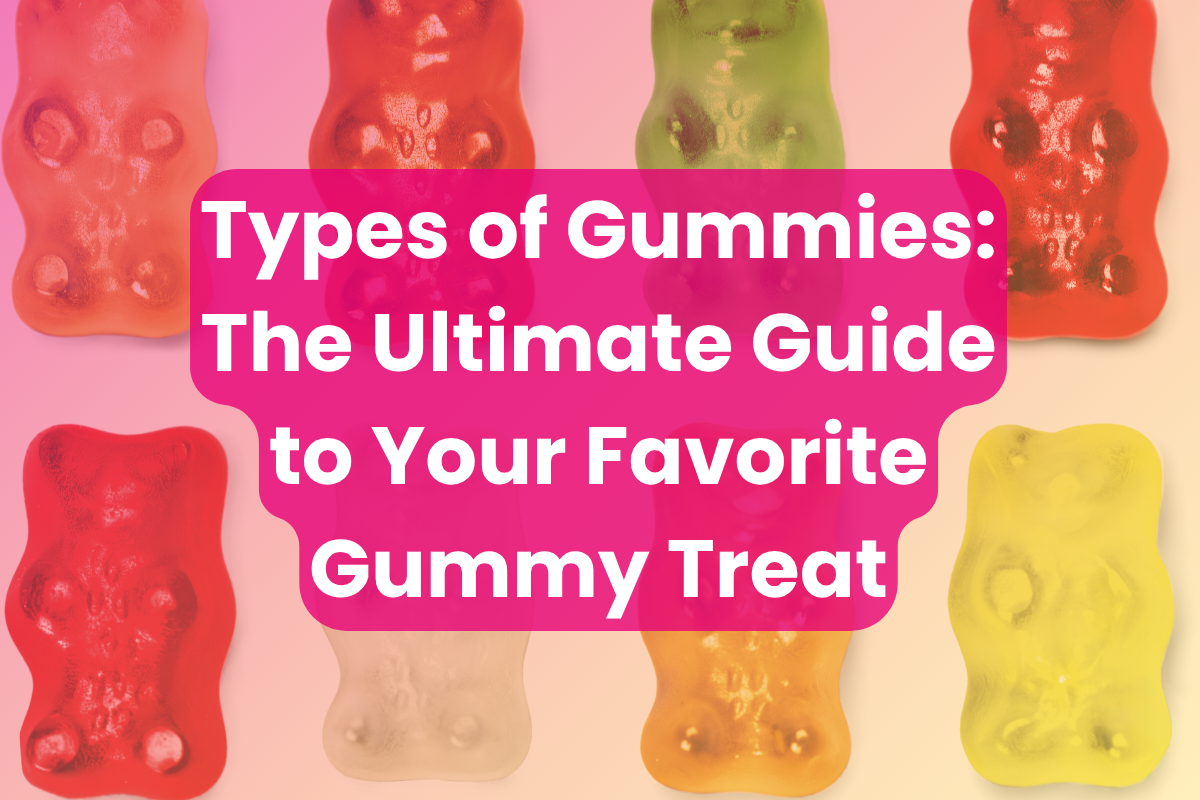
There are the classic gummy bears you used to eat in handfuls as a child. On the other hand, you have the fortified gummy you take to boost your energy levels.
Between those two is a sea of treats that caters to all tastes and needs. It’s safe to say there’s something for everyone in this gelatinous sea.
Today, we’ll check out the different types of gummies and break down the options!
Categories
There are a lot of aspects to consider when you’re categorizing gummies on the market. The main variables are the texture, formula base, flavor, functionality (if there’s one), molded shape, and final coating.
Let’s take a close look at each one!
By Ingredient Base
All gummies need a gelling or thickening agent to hold the rest of the ingredients together and give the candy its iconic, sticky texture.
The most popular choice is gelatin, which is often extracted from animal sources. Bovine gelatine, for instance, comes from cow skin and bones.
However, some manufacturers have shifted to fish gelatin to cater to people with health issues or religious constraints. Others use polysaccharides like agar-agar (from seaweed) or pectin (from plant cells) as vegetarian-friendly alternatives.
By Flavor Profile
Classic gummies are sweet-tart and fruit-flavored. Think raspberry, pineapple, and peach. Soda flavor is also a common choice.
That said, there are newer, bolder flavor profiles on the market. One example that comes to mind is the ridiculously spicy Lil’ Nitro. It’s supposedly 900 times hotter than a jalapeno!
Other manufacturers took the liquor route and made alcohol-infused gummies
Meanwhile, Stuffed Puffs released a new “multisensory” product. That would be the Fuzions, featuring a sour core surrounded by soft gummy candy. The candy is then covered with a crunchy coating.
By Coating
Speaking of coating, you could split gummies into four categories based on the coating type.
-
Plain: The candies are packaged as-is out of the mold without any additional coating.
-
Sugar: Here, powdered sugar and cornstarch are applied to create a non-sticky finish.
-
Sour: That’s when you use a mixture of sugar and citric acid for a sour kick.
-
Chocolate: This is a bit of an acquired taste, but some folks like the chewy gelatin with the creamy chocolate exterior.
By Texture
Gummies are traditionally sticky and jelly-like. However, the base type used affects the texture. For instance, pectin makes softer formulas than gelatin. Agar-agar candies have a soft bite as well.
It’s possible to combine two or more gelling agents in one formula to play around with the texture. Just look at gummy sharks or the pectin and gelatin Berry Cloud gummies.
Fun Fact: A study revealed that people favor soft gummies over dense, hard, or chewy ones!
By Shape
Gummies can be molded into pretty much any shape. If you decide to DIY a patch of gummies, you could use any type of mold you want.
A few popular shapes you might see are:
-
Fruits (usually matching the flavor)
-
Animals or insects (like bears, worms, sharks, fish, etc.)
-
Gumdrops
-
Blocks
-
Rings
-
Soda bottles
-
Human figures/body parts (like Sour Patch Kids, jelly-filled brain candy, and gummy teeth)
By Function or Use
Originally, the gummy was just a type of candy. But nowadays, some gummies are loaded with active ingredients that can help people supplement their diets.
There are energy (loaded with caffeine), protein, and multivitamin gummies. You’ll even find sleep gummies with melatonin added to the formula.
Since they’re more palatable than pills and capsules, many people prefer these nutrient gummies. However, we recommend talking to your primary care physician before adding any supplements to your routine.





Comments (0)
Back to Learn